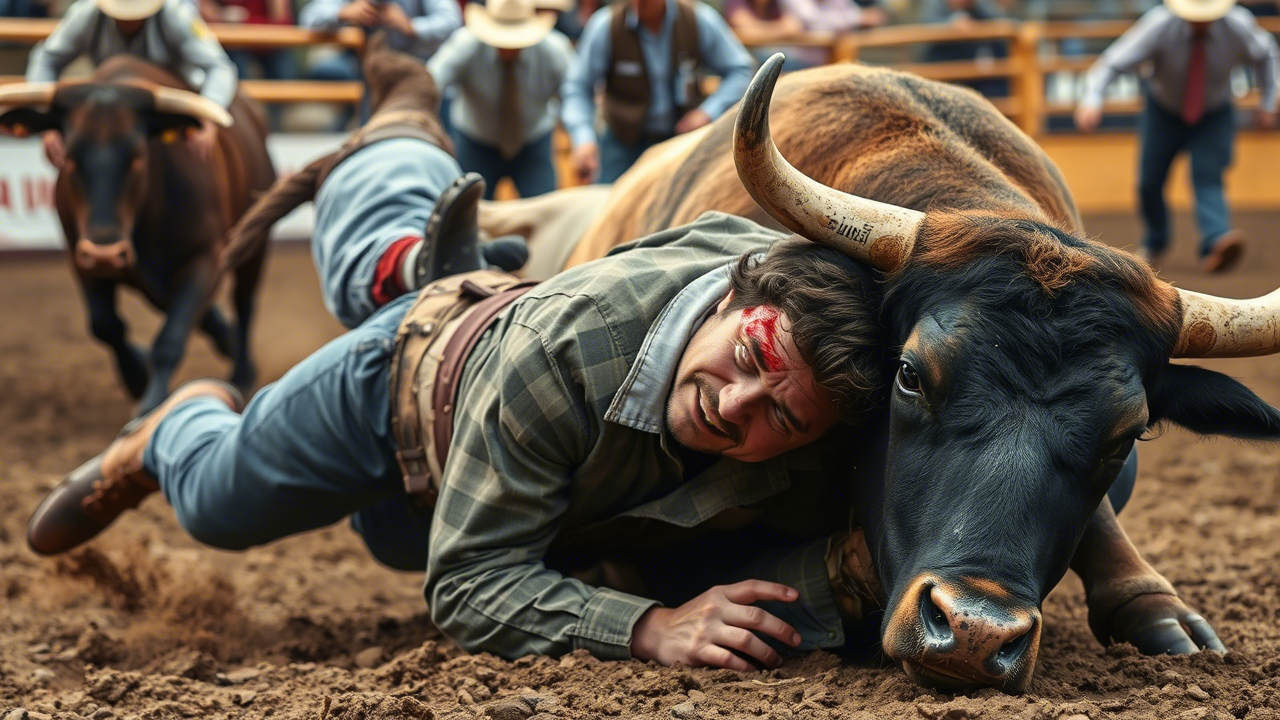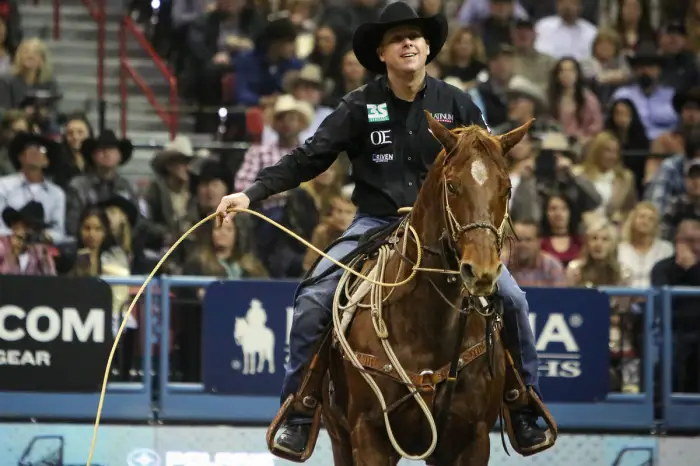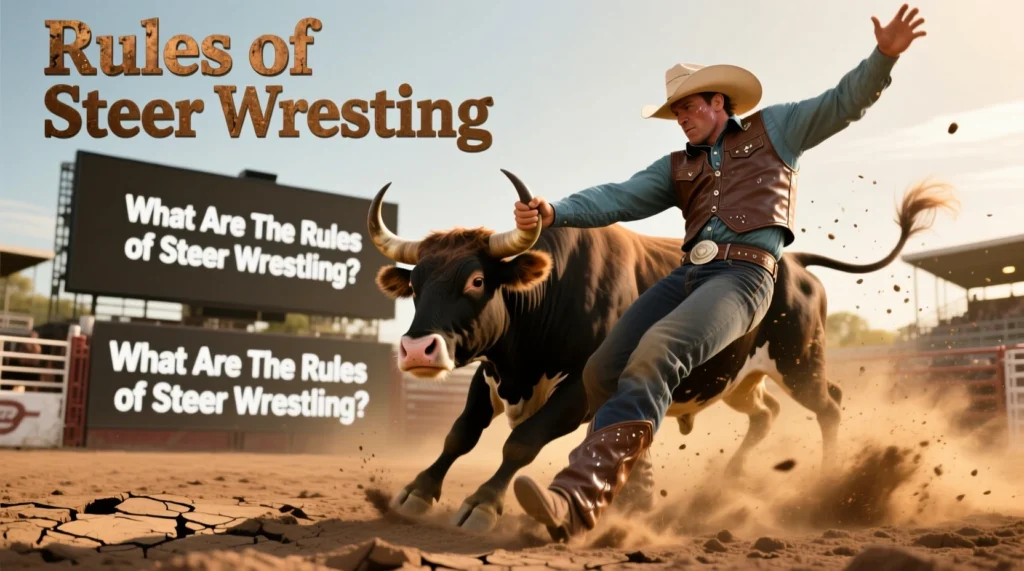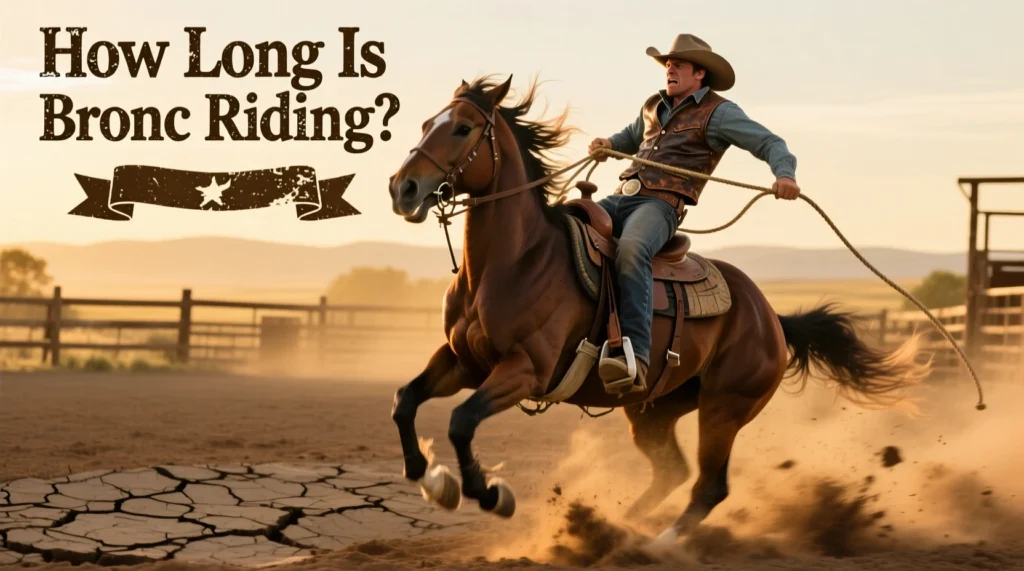Lets explore How Common Are Injuries in Bull Riding? and there statistics, safety data, and prevention strategies. Find out why bull riding has one of the highest injury rates of all sports with expert analysis and comprehensive research.
Table of Contents
Understanding Bull Riding Injury Frequency
Bull riding stands as the most dangerous organized spectator sport in the world, with injury rates significantly higher than any other athletic competition. Bull riders face significant risk every time they compete, with extensive research highlighting significantly higher rates and severity of injuries in the sport.
The inherent danger of the sport comes from the unpredictable nature of the 1,800-2,000 pound bulls combined with their ability to fall and trample. Understanding these injury patterns is critical for riders, medical professionals, and rodeo organizations working to improve safety protocols.
Statistical Overview of Bull Riding Injuries
Primary Injury Rate Data
| Injury Metric | Value | Study Source | Time Period |
|---|---|---|---|
| Bull Riding Injury Rate | 32.2-48.2 per 1000 CE | Multiple Studies | 1995-2014 |
| Exposure Hour Rate | 1440 per 1000 hours | Brandenburg & Archer | 2007 |
| Overall Rodeo Injury Rate | 14.7-25.2 per 1000 CE | Multiple Studies | Various |
| Bull Riding % of All Rodeo Injuries | 19.4-58.4% | Multiple Studies | Various |
| Concussion Rate | 10.6-15.3% | Multiple Studies | 1995-2014 |
| Severe Injury Rate | 36% | Canadian Study | 1995-1999 |
| Head Injury Rate | 27-54.3% | Trauma Centers | 2010-2020 |
| Hospital Admission Rate | <1 in 130 rides | Australian Study | 2005-2011 |
| Surgical Intervention Rate | 64% | Australian Study | 2005-2011 |
CE = Competitor Exposures
How Common Are Injuries in Bull Riding? Bull riding’s injury rate dramatically exceeds other high-contact sports. Studies have shown that bull riders have an injury rate approximately 10.3 times higher than American football, 13.3 times higher than ice hockey, and 1.56 times higher than amateur boxing, indicating extreme risks unique to bull riding competition.
College rodeo participants face an 89% chance of injury each season, which is double the injury rate for college football players. Professional bull riders are ten times more likely to sustain injuries than football players, making it one of the most effective sports for participant safety.
Types and Severity of Bull Riding Injuries
Most Common Injury Categories
Bull riding causes a wide range of injuries, with certain types occurring more frequently than others.
- Contusions and bruising: 19.2-29.5% of all injuries.
- Sprains and strains: 15-35.3% of all injuries.
- Concussions: 5-15.3% of all injuries.
- Fractures: 7.16-22.8% of all injuries.
Body Regions Most Affected
Research consistently identifies specific areas of the body as most vulnerable to injury. Head injuries represent the most serious concern, occurring in 27–54.3% of cases and often requiring immediate medical intervention. The knee is the joint most frequently affected in rodeo, making up 11.1% to 17% of all reported injuries.
Limb injuries account for 52% of hospitalizations, followed by chest injuries at 15% and brain injuries at 10-12%. Life-threatening injuries are usually caused by direct kicks or trampling by bulls rather than simple falls.
Read Web Story For How Common Are Injuries in Bull Riding?
Factors Contributing to High Injury Rates
Mechanism of Injury
Most bull riding injuries are caused by specific causes, with the most common procedure being the impact of the bull being thrown to the ground and stepping on it. Collisions with the ground or an animal account for 62.9% of injuries, while being chased by an animal represents the most dangerous scenario. Most injuries (36.8%) occurred during or shortly after dismounting the bull.
Bulls’ unpredictable behavior creates situations where even experienced riders cannot anticipate or prevent injury. Unlike other sports where conditioning and experience generally reduce the risk of injury, bull riding does not show a correlation between experience level and injury prevention.
Timing and Phase of Injury
How Common Are Injuries in Bull Riding? Research has shown that certain stages of bull riding increase the risk of injury. The descent phase represents the most dangerous moment, when riders lose control and face a possible trample. The 8 seconds ride requirement means riders must actively maintain position on the bucking animal, which poses a constant risk of injury.
Safety Equipment and Prevention Strategies
Current Protective Gear Usage
Modern bull riders use many types of safety equipment. How Common Are Injuries in Bull Riding? Protective vests, now mandatory in many professional organizations, are intended to protect the chest and vital organs from impact. Studies show that the risk of injury is particularly high during certain phases of the event, particularly during or immediately after landing, as well as during preparation for injury.
The use of helmets has increased significantly, especially among young riders. Professional bull riders now require riders born after 1994 to wear protective vests and head gear. Despite these demands, helmet adoption has been met with resistance due to traditional cowboy culture and style preferences.
Effectiveness of Safety Measures
Current protective equipment shows mixed effectiveness in preventing serious injuries. Although safety vests can prevent minor injuries, they appear to be less effective against the most serious crushing injuries that cause fatalities. Research shows that no vest currently available can prevent a bull from collapsing under its full weight.
A proper helmet fit provides significant safety benefits. Studies show that professional helmet fitting reduces the risk of concussions in motor sports by 41%, suggesting that similar benefits may apply to bull riding.
Medical Response and Treatment Outcomes
Emergency Care Requirements
How Common Are Injuries in Bull Riding? Bull riding injuries often require prompt medical intervention. Approximately 64% of bull riders admitted to the hospital required surgical treatment, with an average hospital stay of 2.2 days. Emergency air transport becomes necessary in 5-10% of cases with severe trauma.
The remote locations of many rodeo events create additional challenges for medical response. This geographical factor often delays treatment and can worsen outcomes for serious injuries.
Long-term Health Implications
Research has focused on the long-term neurological effects of repeated head impacts in rapid bull riding. Bull riders are now included in the Professional Athletes Brain Health Study, which evaluates chronic traumatic encephalopathy (CTE) and other brain diseases. Six-time world champion Kaycee Feild’s traumatic brain injury in 2019 highlighted the serious long-term consequences riders can face.
Injury Prevention Recommendations
Immediate Safety Improvements
Medical professionals recommend several strategies to reduce bull riding injury rates. Improved training programs that focus on proper dismounting techniques can reduce injuries during the most dangerous phase of competition. Improved field design and emergency response protocols will provide better protection and quicker treatment.
Mandatory use of properly installed safety equipment represents an important intervention. Organizations require professional fitting of helmets and regular equipment inspections to ensure maximum protection.
Long-term Safety Initiatives
A comprehensive injury surveillance system will provide better data for prevention strategies. Standardized injury reporting across all rodeo organizations could identify trends and guide safety improvements. Investing in research and development of more effective safety equipment is essential to reducing the rate of serious injuries.
5.06% Injury Probability
How Common Are Injuries in Bull Riding? Bull riding injuries occur at unprecedented rates in organized sports, with riders experiencing a 5.06% probability of injury. The 1,440 sports injuries per 1,000 exposure hours are more than any other athletic activity, making preventive measures imperative. While safety equipment and safety protocols continue to evolve, the fundamental nature of bull riding ensures that the risk of injury will remain considerable.
Understanding these statistics empowers riders, families and medical professionals to make informed decisions about participation and preparation. Continued research, improved safety equipment, and improved medical protocols offer the best hope of reducing the number of catastrophic injuries in this uniquely American sport.










